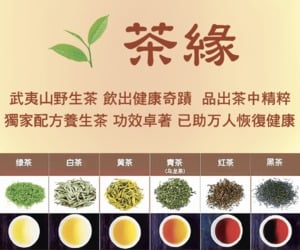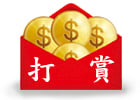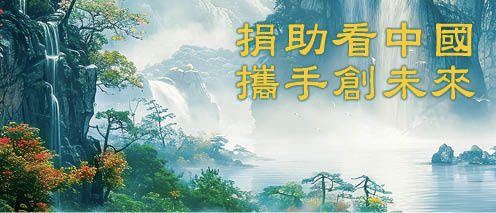每年的公曆四月五日前後為清明節,是二十四節氣之一。今年的清明節是4月5日。在二十四個節氣中,既是節氣又是節日的只有清明。清明節是我國傳統節日,也是最重要的祭祀節日。
按照舊的習俗,祭祀(掃墓)時,人們要攜帶酒食果品、紙錢等物品到墓地,將食物供祭在親人墓前,再將紙錢焚化,為墳墓培上新土,折幾枝嫩綠的新枝插在墳上,然後叩頭行禮祭拜,最後吃掉酒食回家。
清明節,又叫踏青節,正是春光明媚草木吐綠的時節,也正是人們春遊的好時候,所以古人有清明踏青,並開展一系列體育活動的的習俗。直到今天,清明節祭拜祖先,悼念已逝的親人的習俗仍很盛行。
今天,小編就帶大家一起閱讀一篇關於清明習俗的英語文章。在閱讀的過程中一起學習關於清明節的地道表達。
Celebrated two weeks after the vernal equinox(24節氣之一的春分), Tomb Sweeping Day is one of the few traditional Chinese holidays that follows the lunar calendar(lunar calendar,意為農曆、陰曆)--typically falling on April 4, 5, or 6. Its Chinese name "Qing Ming" literally means "Clear Brightness," hinting at its importance as a celebration of Spring. Similar to the spring festivals of other cultures, Tomb Sweeping Day celebrates the rebirth of nature, while marking the beginning of the planting season and other outdoor activities.
Qing Ming Jie in Ancient Times
古代的清明節
In ancient times, people celebrated Qing Ming Jie with dancing, singing, picnics, and kite flying. Colored boiled eggs(原來古代中國的清明節和西方復活節一樣有彩蛋……小編只能感嘆歷史驚人的相似了……) would be broken to symbolize the opening of life. In the capital, the Emperor would plant trees on the palace grounds to celebrate the renewing nature of spring. In the villages, young men and women would court each other.
The Tomb Sweeping Day as Celebrated Today
慶祝春天的清明
With the passing of time, this celebration of life became a day to the honor past ancestors. Following folk religion(folk religion,民間習俗、信仰), the Chinese believed that the spirits of deceased ancestors looked after the family. Sacrifices of food and spirit money could keep them happy, and the family would prosper through good harvests and more children.
Today, Chinese visit their family graves to tend to any underbrush that has grown. Weeds are pulled, and dirt swept away, and the family will set out offerings of food and spirit money(注意紙錢的官方說法啊:spirit money). Unlike the sacrifices at a family's home altar, the offerings at the tomb usually consist of dry, bland food. One theory is that since any number of ghosts rome around a grave area, the less appealing food will be consumed by the ancestors, and not be plundered by strangers.
Honoring Ancestors
祭祖
Honoring ancestors begins with proper positioning of a gravesite and coffin. Experts in feng shui, or geomancy, determine the quality of land by the surrounding aspects of streams, rivers, trees, hills, and so forth. An area that faces south, with groves of pine trees creates the best flow of cosmic energy required to keep ancestors happy. Unfortunately, nowadays, with China's burgeoning population, public cemeteries have quickly surpplanted private gravesites. Family elders will visit the gravesite at least once a year to tend to the tombs.
While bland food is placed by the tombs on Qing Ming Jie, the Chinese regularly provide scrumptious offerings to their ancestors at altar tables in their homes. The food usually consists of chicken, eggs, or other dishes a deceased ancestor was fond of. Accompanied by rice, the dishes and eating utensils are carefully arranged so as to bring good luck. Sometimes, a family will put burning incense with the offering so as to expedite the transfer of nutritious elements to the ancestors. In some parts of China, the food is then eaten by the entire family.
Kites
風箏
Besides the traditions of honoring the dead, people also often fly kits on Tomb Sweeping Day. Kites can come in all kinds of shapes, sizes, and colors. Designs could include frogs, dragonflies, butterflies, crabs, bats, and storks.
来源:騰訊
短网址: 版權所有,任何形式轉載需本站授權許可。 嚴禁建立鏡像網站。
【誠徵榮譽會員】溪流能夠匯成大海,小善可以成就大愛。我們向全球華人誠意徵集萬名榮譽會員:每位榮譽會員每年只需支付一份訂閱費用,成為《看中國》網站的榮譽會員,就可以助力我們突破審查與封鎖,向至少10000位中國大陸同胞奉上獨立真實的關鍵資訊, 在危難時刻向他們發出預警,救他們於大瘟疫與其它社會危難之中。








